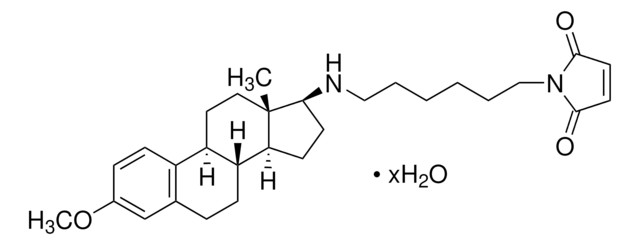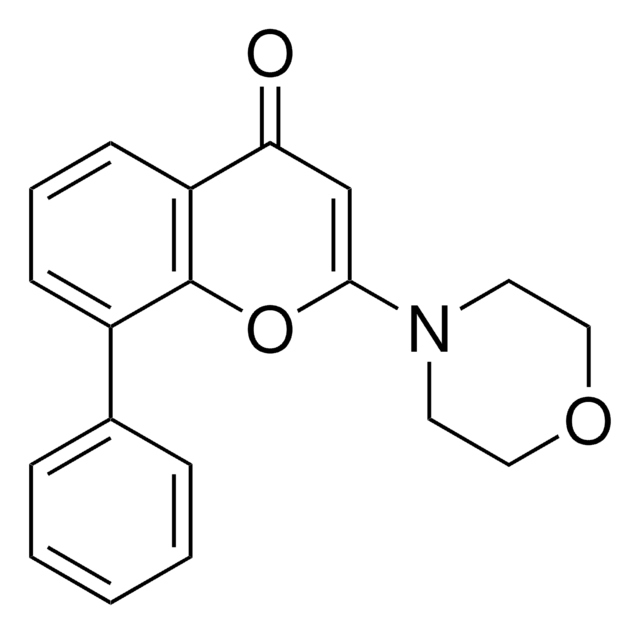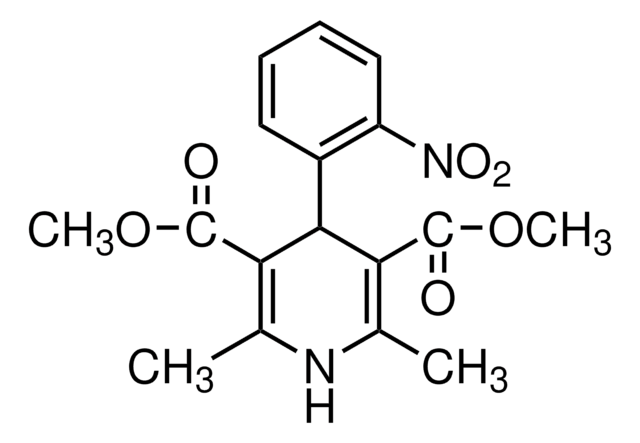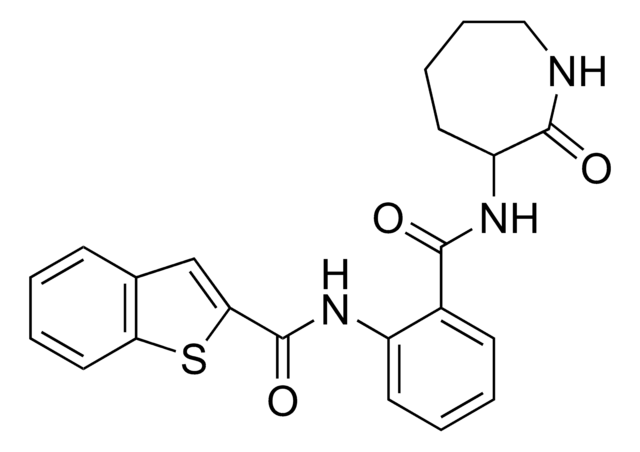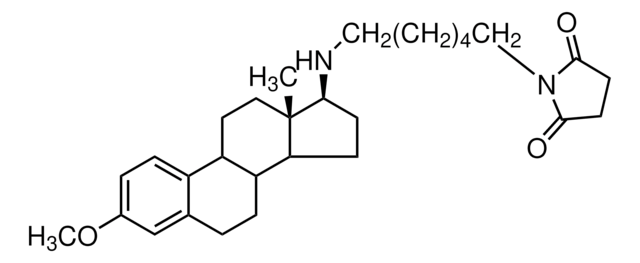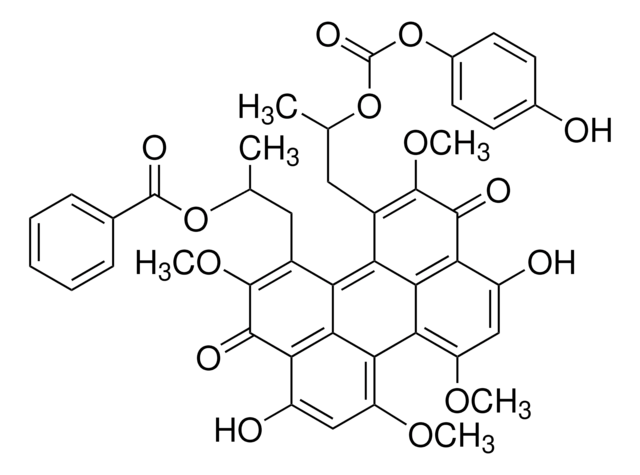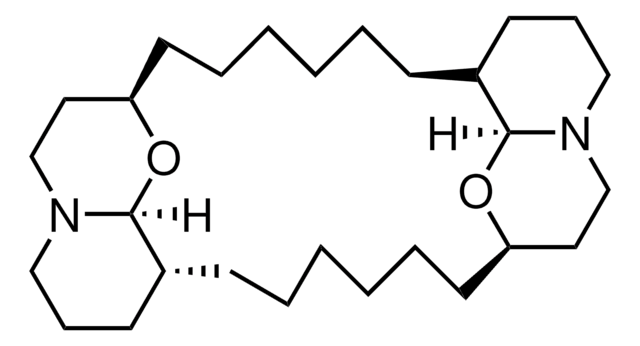662035
U-73122
≥98% (HPLC), solid, agonist-induced phospholipase C activation inhibitor, Calbiochem®
Synonym(s):
U-73122, 1-[6-((17β-3-Methoxyestra-1,3,5(10)-trien-17-yl)amino)hexyl]-1H-pyrrole-2,5-dione
About This Item
Recommended Products
product name
U-73122, U-73122, CAS 112648-68-7, inhibits agonist-induced phospholipase C activation (IC50 = 1-2.1 µM) in human platelets and neutrophils.
Quality Level
Assay
≥98% (HPLC)
form
solid
manufacturer/tradename
Calbiochem®
storage condition
OK to freeze
color
off-white
solubility
anhydrous DMSO: 1 mg/mL
chloroform: 3 mg/mL
anhydrous ethanol: 500 μg/mL
shipped in
ambient
storage temp.
10-30°C
InChI
1S/C29H40N2O3/c1-29-16-15-23-22-10-8-21(34-2)19-20(22)7-9-24(23)25(29)11-12-26(29)30-17-5-3-4-6-18-31-27(32)13-14-28(31)33/h8,10,13-14,19,23-26,30H,3-7,9,11-12,15-18H2,1-2H3/t23-,24-,25+,26+,29+/m1/s1
InChI key
LUFAORPFSVMJIW-ZRJUGLEFSA-N
General description
Biochem/physiol Actions
Agonist-induced phospholipase C activation
Warning
Preparation Note
Reconstitution
Other Notes
Smith, R.J., et al. 1996. J. Pharmacol. Exp. Ther.278, 320.
Tatrai, A., et al. 1994. Biochim. Biophys. Acta 1224, 595.
Wang, X.D., et al. 1994. Biochim. Biophys. Acta1223, 101.
Bleasdale, J.E., and Fisher, S.K. 1993. Neuroprotocols: A Companion to Methods in Neurosci. 3, 125.
Wu, H., et al. 1992. Biochemistry31, 3370.
Yule, D.I., and Williams, J.A. 1992. J. Biol. Chem.267, 13830.
Thompson, A.K., et al. 1991. J. Biol. Chem.266, 23856.
Legal Information
Storage Class Code
11 - Combustible Solids
WGK
WGK 3
Flash Point(F)
Not applicable
Flash Point(C)
Not applicable
Certificates of Analysis (COA)
Search for Certificates of Analysis (COA) by entering the products Lot/Batch Number. Lot and Batch Numbers can be found on a product’s label following the words ‘Lot’ or ‘Batch’.
Already Own This Product?
Find documentation for the products that you have recently purchased in the Document Library.
Customers Also Viewed
Our team of scientists has experience in all areas of research including Life Science, Material Science, Chemical Synthesis, Chromatography, Analytical and many others.
Contact Technical Service